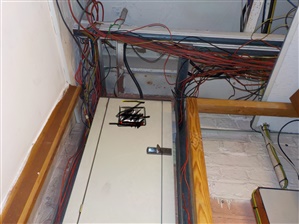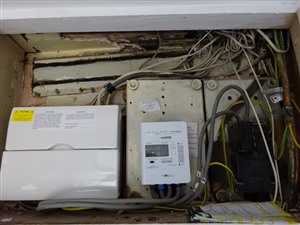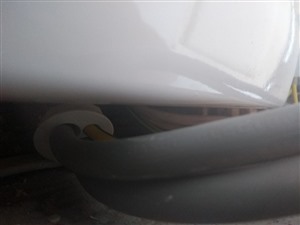


Sparkingchip:
dcbwhaley The OP is conspicuous by his absence, I trust all is well.
Thank you for your concern. OP is well and following the discussion with interest.
I visited the installation yesterday and corrected the other C1s.
I took some very bad photographs. This one is an overview. You will see that the base of the CU is only ab out an inch above the bottom of the cupboard in which it lives. This necessitates a sharp bend in the tails which must have put a strain on the grommet which popped out when the meter was changed. My main concern is that with the grommet pulled out of the hole the tails might be on the point of pulling out of the terminals in the CU. Because of that I am very reluctant to risk taking the cover off the CU
Two other things from this photo: where the tails leave the meter the sheath has been stripped back leaving the insulation on view: (definate C2.); and there is no seal on the DNO fuse
This is an attempt to show the situation where the tails entere the CU. Not very helpful.
I have advised my daughter to get a proper electrician to move the CU up by about three inches and refit the grommet and ensure that the tails are secure.
Then I will be confident to do other remedial work such as fitting properly rated MCBs
We're about to take you to the IET registration website. Don't worry though, you'll be sent straight back to the community after completing the registration.
Continue to the IET registration site